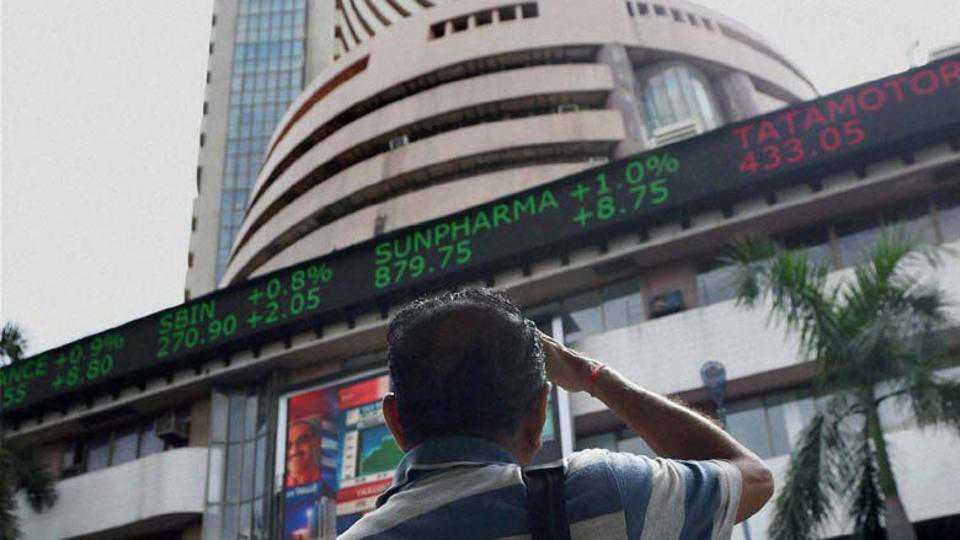Sensex, Nifty at record high; welcome India growth story
30 January, 2018

Chief Economic Advisor (CEA) Arvind Subramanian has hinted at a bubble kind of situation in the stock market and has called for heightened vigilance.
Speaking to media after presenting the Economic Survey Report, the CEA said, “We have seen around the world that when asset prices go up very much, they always tend to come back and so we have to be watchful. The higher the prices go, I think our vigilance should increase correspondingly.”
The economic survey report re-iterates this fear. The report notes that markets expect rapid growth, triggering the run-up in stock prices. However, it warns of the risks that the economy faces and therefore, asks for exercising caution.
Sustaining these valuations will require future growth in the economy and earnings in line with current expectations, and require the portfolio re-allocation to be semi-permanent. Otherwise, the possibility of a correction in them cannot be ruled out.
However, ignoring the warning Sensex and Nifty ended at a fresh record closing high. Sensex was up 233 points at 36,283.25 and Nifty gained 60.70 points at 11,130.40.
Markets welcomed the Survey's observation that India is poised to become the world's fastest growing economy in 2018-19 registering a GDP growth of 7.5 per cent and possibly 8 per cent if the petroleum prices don't play a villain.
Over the past two fiscal years, the Indian stock market has soared, outperforming many other major markets. Since end-December 2015, the S&P index has surged 45 per cent, while the Sensex has surged 46 percent in rupee terms and 52 per cent in dollar terms.
This has led to a convergence in the price-earnings ratios of the Indian stock market to that of the US at a lofty level of about 26. Yet over this period the Indian and US economies have been following different paths.
So what explains the sudden convergence in stock markets?
By 2017-18, signs began to accumulate that the profit recovery was not obviously around the corner. But at that point a second factor gave the market further impetus. That factor was demonetisation.
The price of an asset is not solely determined by the expected return on that asset. It is also determined by the returns available on other assets. As pointed out in last year's Economic Survey, the government's campaign against illicit wealth over the past few years-exemplified by demonetisation has in effect imposed a tax on certain activities, specifically the holding of cash, property, or gold.
Cash transactions have been regulated; reporting requirements for the acquisition of gold and property have been stiffened. In addition, rupee returns to holding gold have plunged since mid-2016, turning negative since mid-2017.
In addition, previously, stock prices had suffered because reporting requirements were higher on shares than purchases of other asset. But the attack on illicit wealth has helped to level the playing field.
All of this has caused investors to re-evaluate the attractiveness of stocks. Investors have accordingly reallocated their portfolios toward shares, with inflows through stock mutual funds, in particular, amounting in 2016-17 to five times their previous year's level. Accordingly the equity risk premium (ERP, the extra return required on shares compared with other assets) has fallen.
Does this imply that Indian P/E ratios have reached a higher "new normal"? Perhaps.
It's possible that the portfolio shift set in train by the campaign against illicit wealth will result in a sustained reduction in the ERP.
But it is worth recalling that a similar assessment was made in the US after its ERP fell sharply in the late 1990s-early 2000s. A few years later, the technology bubble collapsed, then the Global Financial Crisis occurred. The ERP surged to new heights and still hasn't reverted to its previous trough.
Beyond ERPs, sustaining current stock valuations in India also requires future earnings performance to rise to meet still high expectations. And this outlook, in turn, depends on whether a significant economic rebound is this time well and truly around the corner.
In sum, the Indian stock market surge is different from that in advanced economies in three ways: growth momentum, level and share of profits, and critically the level of real interest rates.
Low levels of the latter have been invoked to justify the high valuations in advanced economies. By that token, India's valuations should be much lower. So, what appears to be driving India's valuations is a fall in the ERP reflected in a massive portfolio re-allocation by savers towards equity in the wake of policy-induced reductions in the return on other assets.
